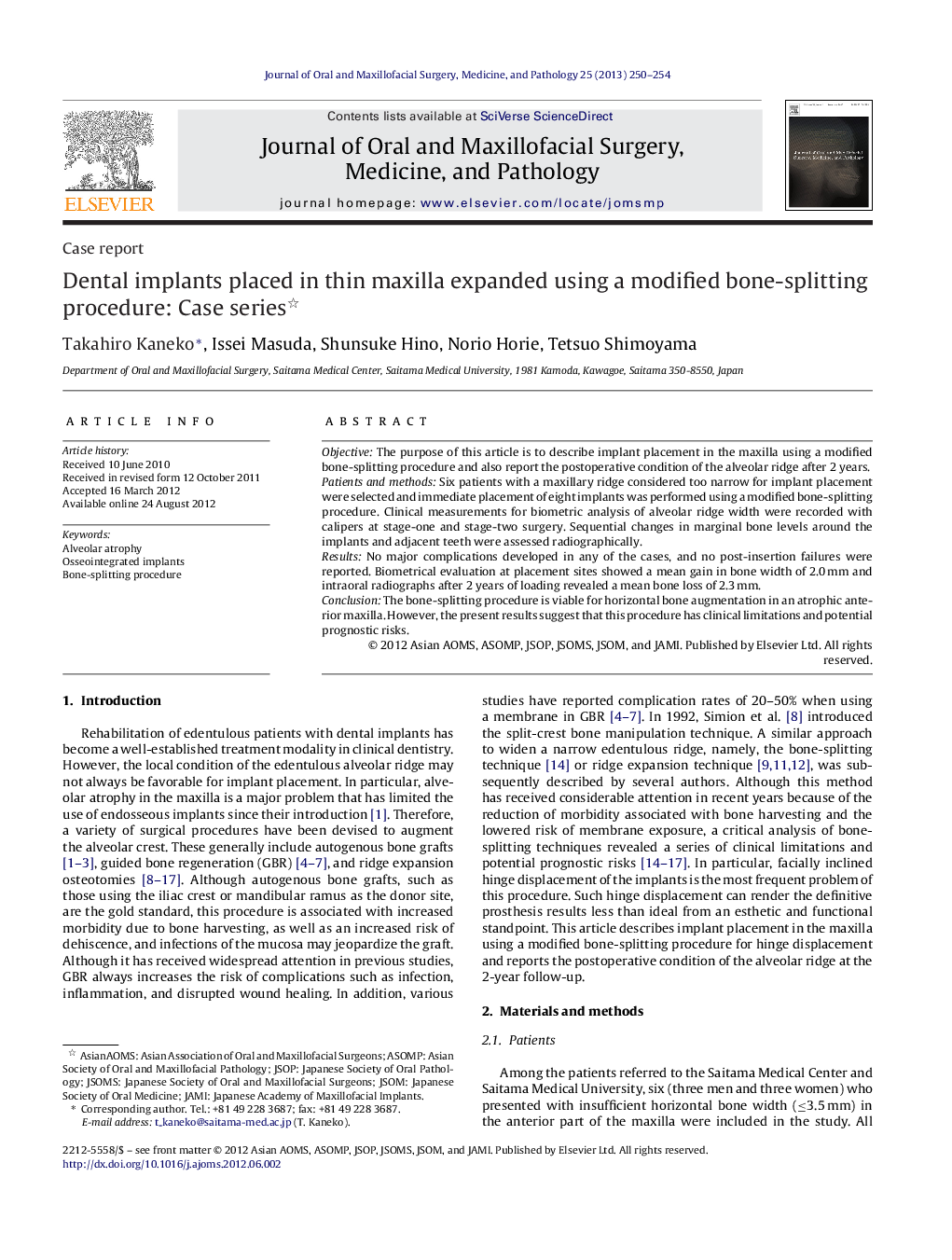| کد مقاله | کد نشریه | سال انتشار | مقاله انگلیسی | نسخه تمام متن |
|---|---|---|---|---|
| 3160422 | 1198516 | 2013 | 5 صفحه PDF | دانلود رایگان |

ObjectiveThe purpose of this article is to describe implant placement in the maxilla using a modified bone-splitting procedure and also report the postoperative condition of the alveolar ridge after 2 years.Patients and methodsSix patients with a maxillary ridge considered too narrow for implant placement were selected and immediate placement of eight implants was performed using a modified bone-splitting procedure. Clinical measurements for biometric analysis of alveolar ridge width were recorded with calipers at stage-one and stage-two surgery. Sequential changes in marginal bone levels around the implants and adjacent teeth were assessed radiographically.ResultsNo major complications developed in any of the cases, and no post-insertion failures were reported. Biometrical evaluation at placement sites showed a mean gain in bone width of 2.0 mm and intraoral radiographs after 2 years of loading revealed a mean bone loss of 2.3 mm.ConclusionThe bone-splitting procedure is viable for horizontal bone augmentation in an atrophic anterior maxilla. However, the present results suggest that this procedure has clinical limitations and potential prognostic risks.
Journal: Journal of Oral and Maxillofacial Surgery, Medicine, and Pathology - Volume 25, Issue 3, July 2013, Pages 250–254